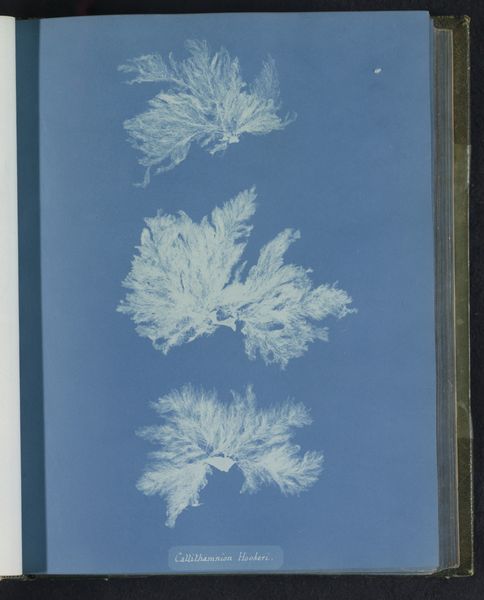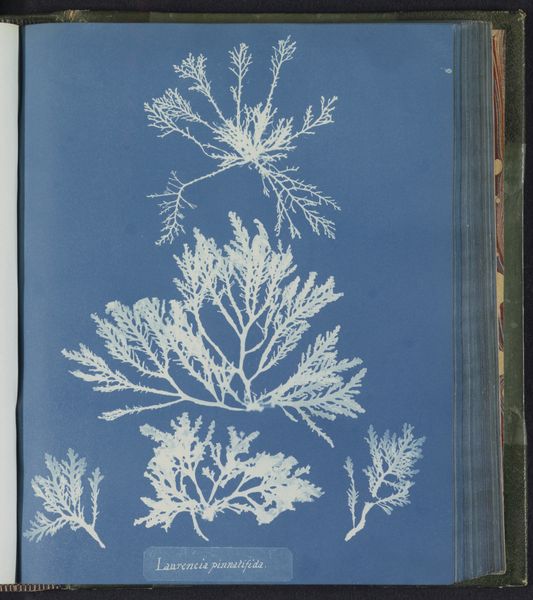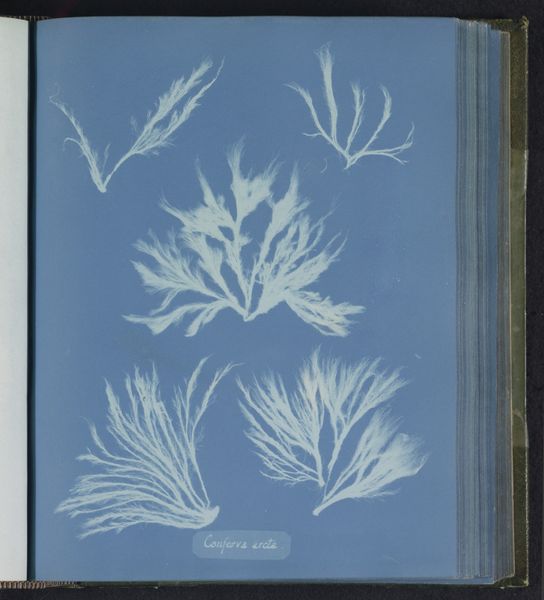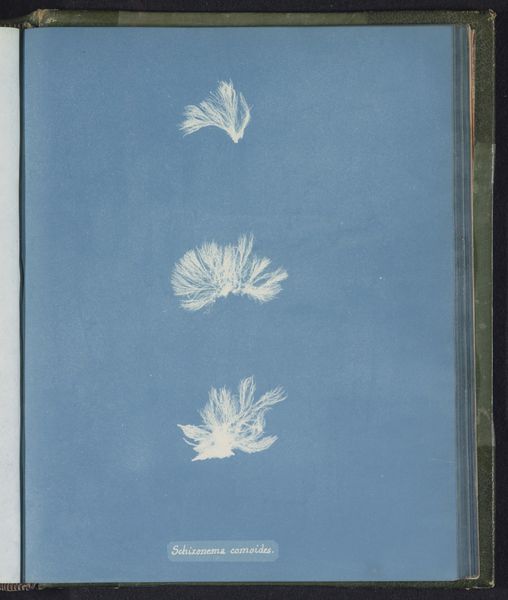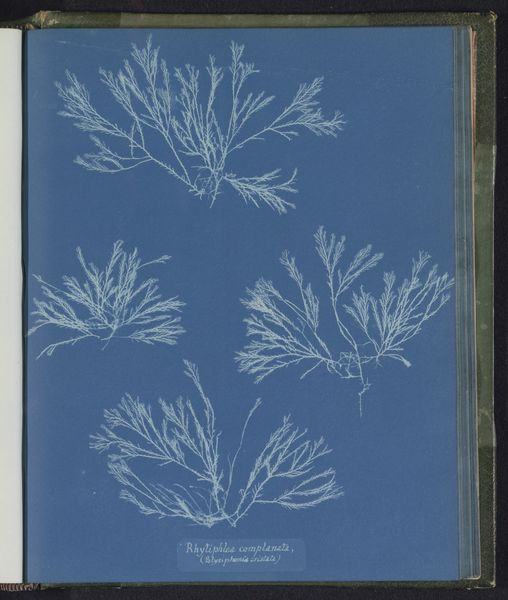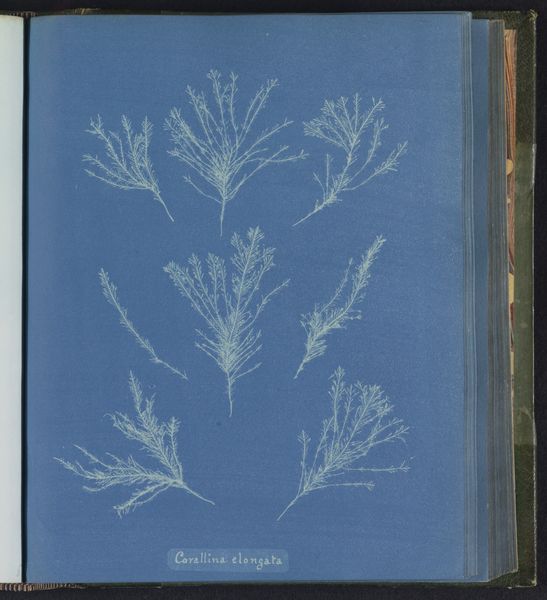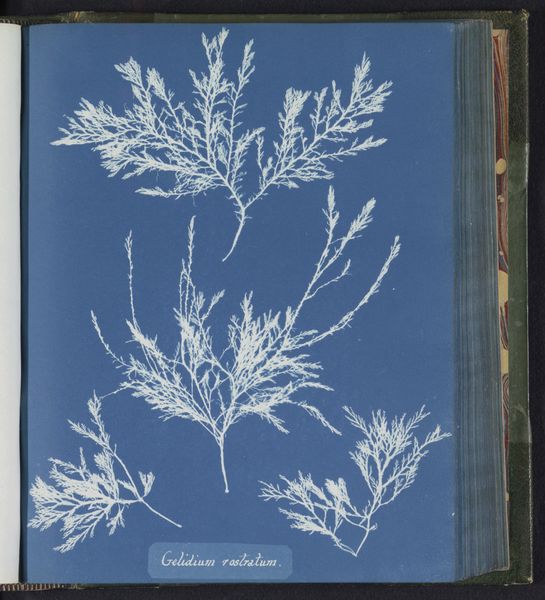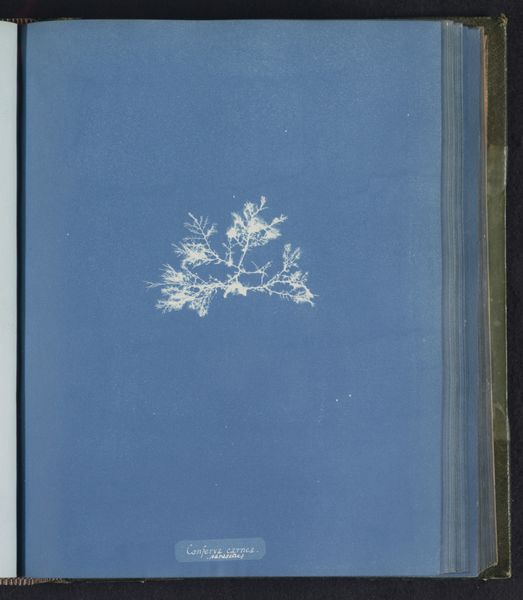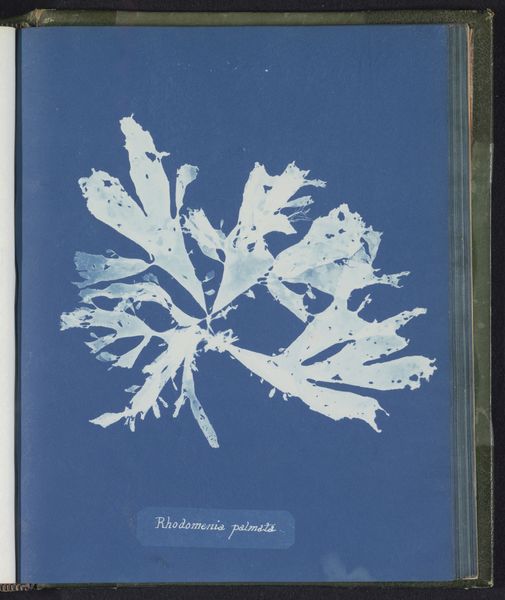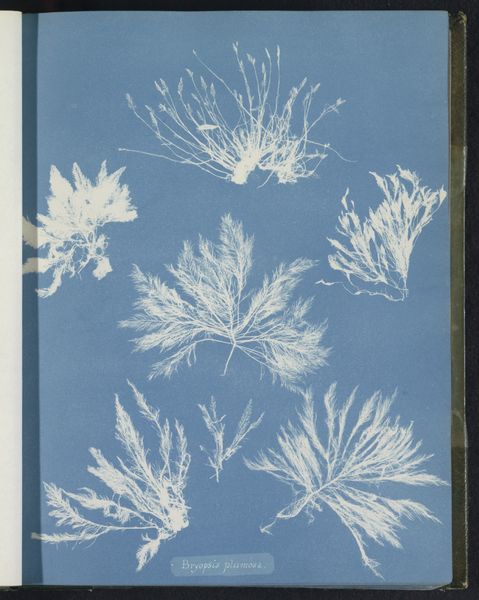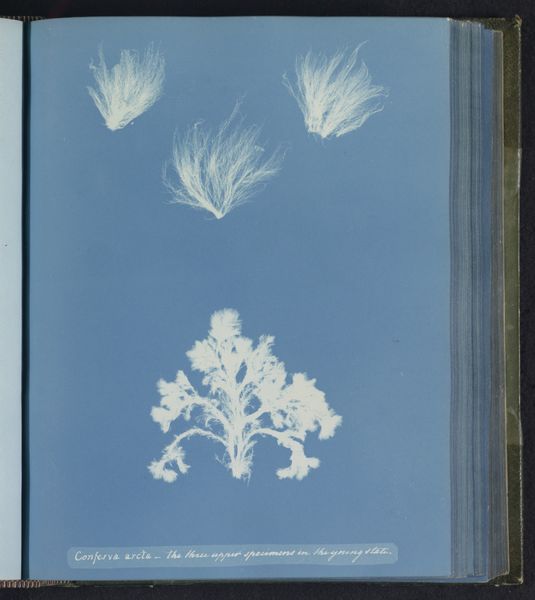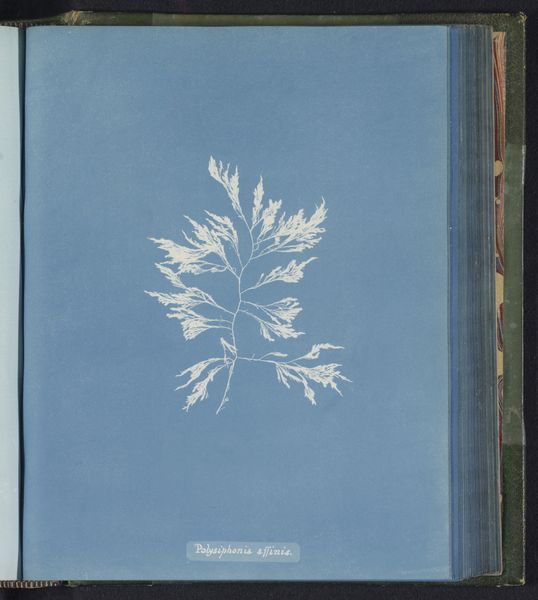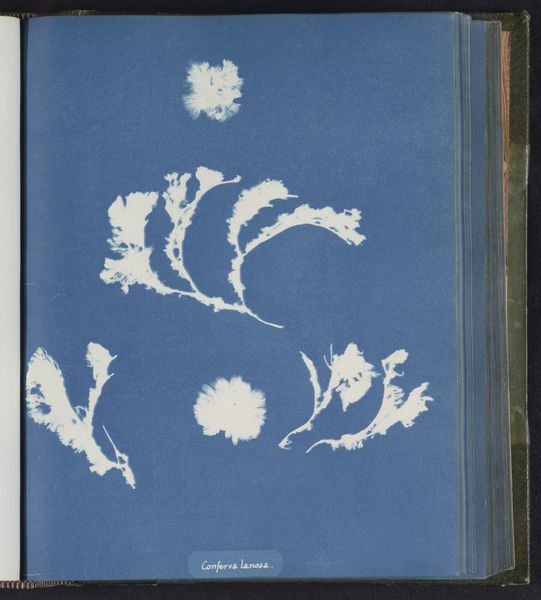
print, cyanotype, photography
#
still-life-photography
# print
#
cyanotype
#
photography
#
naturalism
Dimensions: height 250 mm, width 200 mm
Copyright: Rijks Museum: Open Domain
Curator: It's breathtaking, isn't it? This cyanotype, *Conferva fucicola*, dating from the mid-19th century, is by Anna Atkins. Look at that Prussian blue – it's like a dream world for seaweed. Editor: Absolutely dreamlike. But also, so... scientific. The almost clinical precision of these ghostly, floating specimens against that solid blue is captivating and strange, especially considering how photography was still blossoming at the time. Curator: Precisely! Atkins, a botanist herself, pioneered the use of cyanotypes – a very early form of photography using iron salts and sunlight – to document algae specimens. Talk about merging art and science in such an intimate way! Editor: And the process speaks volumes, doesn't it? Each piece of algae had to be carefully placed directly onto the sensitized paper. The sunlight burning those silhouettes into the page feels so… visceral, immediate, despite the scientific motivation. It challenges the power of images and reproducibility. Curator: The stark simplicity has this uncanny elegance, doesn't it? Almost ethereal. You forget it's meant to be a scientific document; it evokes a landscape within itself. A beautiful homage to this plant, so intricately preserved for posterity. Editor: Yes, but its scientific function doesn’t dissolve – these images provided important visual records when they were produced. How would the cyanotypes shape science's view of algae at that time? How was something as beautiful as it is "useful" in academic spheres? And now its life and value are extended even more within a new time and purpose inside a gallery like this one. Curator: That is very well put. You know, standing here, thinking of sunlight and the patience required… it makes you see the beauty of quiet observation. Editor: Exactly. And reminds us of the layered lives of art. Thanks to its strange blend of rigor, visuality and process, Atkins’s print makes you wonder how photography can challenge art making as a whole. What stories will the blue of the seaweed and its forms whisper to a different audience a century from now?
Comments
No comments
Be the first to comment and join the conversation on the ultimate creative platform.
